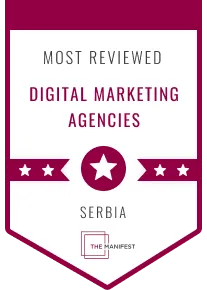I often get asked, how do I create a powerful brand that resonates with my customers?
Now, a powerful brand is more than just a label or a logo, it’s a way of life for many people, and I’m no exception. And as a consumer, we’re drawn to brands that resonate with us on a personal level, that speaks to our values and aspirations.
Shall we find out?
What makes a brand truly powerful?
For starters, a powerful brand is not about the product or the industry, but about what it does for people. It defines a compelling purpose and reflects the customer building an image and reputation in their specific mind that has their personal relevance, even if it may alienate other people.
I suppose it engages customers in achieving a big idea in a style that resonates with them and enables them to do even more. Maybe they get the ”just do it” feeling. A great brand is really liked by everyone. And I’m sure there’s many brands out there that you personally don’t like and same here. But it does stir up passion, polarises people and obviously alienates some while being loved by others.
So how can a business create a powerful brand that resonates with its customers?
Well, one great example is Tesco’s. Ironically, a brand I’m not particularly a fan of. But for those of you who don’t know who Tesco’s are, they’re actually a major UK supermarket.
Now Tesco’s was faced with fierce competition from discount supermarkets in the early 2000s, and they needed to differentiate themselves and create a powerful brand that would resonate with their customers and enable them to achieve more than just their grocery needs. Interestingly, Tesco’s response was to redefine their brand and create a more emotional connection with their customers.
They launched a market campaign with a slogan, Every Little Helps, to communicate that they were not just a supermarket, but a partner in helping customers achieve their everyday goals. They invested heavily in improving their stores, revamping their product ranges and developing their own brand products to offer more value to customers.
They also improve their customer service by investing in staff training and creating new roles, such as a personal shopper to make shopping more convenient for customers. And we shouldn’t forget about how they developed a loyalty program called Club Card, which rewards customers for their loyalty with personalised offers, discounts, and other benefits.
This program became an important tool for Tesco’s to understand their customers and offer them a relevant product and services. The result of this rebranding and customer focused approach was a significant increase in customer loyalty and market share. By putting their customers at the centre of everything, which they did, Tesco’s was able to create a powerful brand that resonated with the people personally, and that made them number one supermarket.
However, after two decades on, I feel they have lost their way and become more focused on profits over their customers or staffing for that matter. This can be easily seen by looking at their declining shares and the closure of quite a few of their stores. They need to take a step back and look at what their brand focus should be.
You can now see why they no longer resonate with myself and equally others. It’s like anything, really. If you’re a social media influencer, if you get too big for your boots, then you become tomorrow’s fish and chip paper and people lose faith in what you have to say.
But what can a small business learn from Tesco’s approach to branding?
Well, it all starts with defining your brand purpose.
Ask yourself questions like, What problem does my business solve for customers? Or what impacts do I want to have on the world?
This purpose should be at the heart of everything your business does and should guide you through all your decision making.
It’s also important to understand your customers and their needs, desires and pain points. Which we’ve discussed in many previous podcast episodes.
Conduct surveys or interviews, analyse customer data and use social media to engage with your customers and gather feedback. I know I keep on harping about this, but this information will help you tailor your products and service messages to better meet your customer’s needs.
Creating a strong and consistent visual identity is also massively important. This includes your logo, colour, scheme, typography, and other design elements, and make sure your brand is reflected of your brand purpose and resonates with your target audience.
This is something I always explain to clients. You need to be consistent through absolutely everything you do. And of course, offering a unique and memorable customer experience is crucial. This could be through personalised services, creating a comfortable and welcoming environment or offering exclusive products or services. Make sure every interaction with your business is positive and aligns with your brand purpose.
And of course, building your customer loyalty is very important. Invest in creating a loyalty program such as the Tesco’s club card or offering incentives for repeat business. Encourage your customers to share their positive experience with your business through word of mouth or social media. This can help build trust and credibility with potential customers, which can lead to more sales and growth for your business.
And finally, be adaptable- as your customers needs and the market evolve, be open to adapting your brand and business model.
As we can see, Tesco’s hasn’t done that. It feels like just a put down of Tesco’s. Hey, I put them up and then put them down.
This could mean expanding your product offerings, embracing new technologies or repositioning your brands to better meet customers needs by simply following these steps.
A small business can create a powerful brand that resonates with their customers and help them achieve more than just their immediate needs.
Food for Thought
Remember, a powerful brand is not just about the size or budget, but about creating a meaningful connection with your customers. You think about the restaurants you go to eat in and, and how that waiter there really, you know, he’s great or she’s great. You just like going there because you get the best service.
Powerful Brand Examples
There’s some great example of small businesses that have successfully created a powerful brand. If we take a look at one of my personal favourites, Warby Parker. Now, Warby Parker is an online retailer that sells prescription eyewear and sunglasses.
They’re known for their stylish and affordable frames, as well as their innovation home try on program, which allows customers to try on up to five frames at home for free, which is absolutely phenomenal. But what really sets Waby Parker apart is their commitments to social responsibility. For every pair of glasses sold, they donate a pair to someone in need through their Buy a Pair, Give a Pair program. They also work with non profit organisations to provide free eye exams and glasses to undeserved communities.
These social missions have helped Waby Parker create a powerful brand that resonates with their customers who value both style and social responsibility. By aligning their brand purpose with a larger social mission, they’ve kind of been able to create a loyal customer base and in return drive growth for their business.
Final Notes
So if we were to sum this all up, creating a powerful brand is more about just a clever slogan or a pretty logo.
It’s about defining a compelling purpose, reflecting the customers and creating an emotional connection with your specific audience. Small businesses can learn from the example of larger companies like Tesco and Waby Parker and follow some key steps to create a brand that, you know, resonates with their customers and drives growth for their specific businesses.
That’s all for today’s episode and we would love to hear your feedback on, on our episodes and any questions you have about e-commerce, branding and marketing, please leave your comments on our channel and we’ll do our very best to address them in future podcast episodes.
So thanks for tuning in and we’ll see you next time on the e-commerce insiders podcast. Bye for now.











